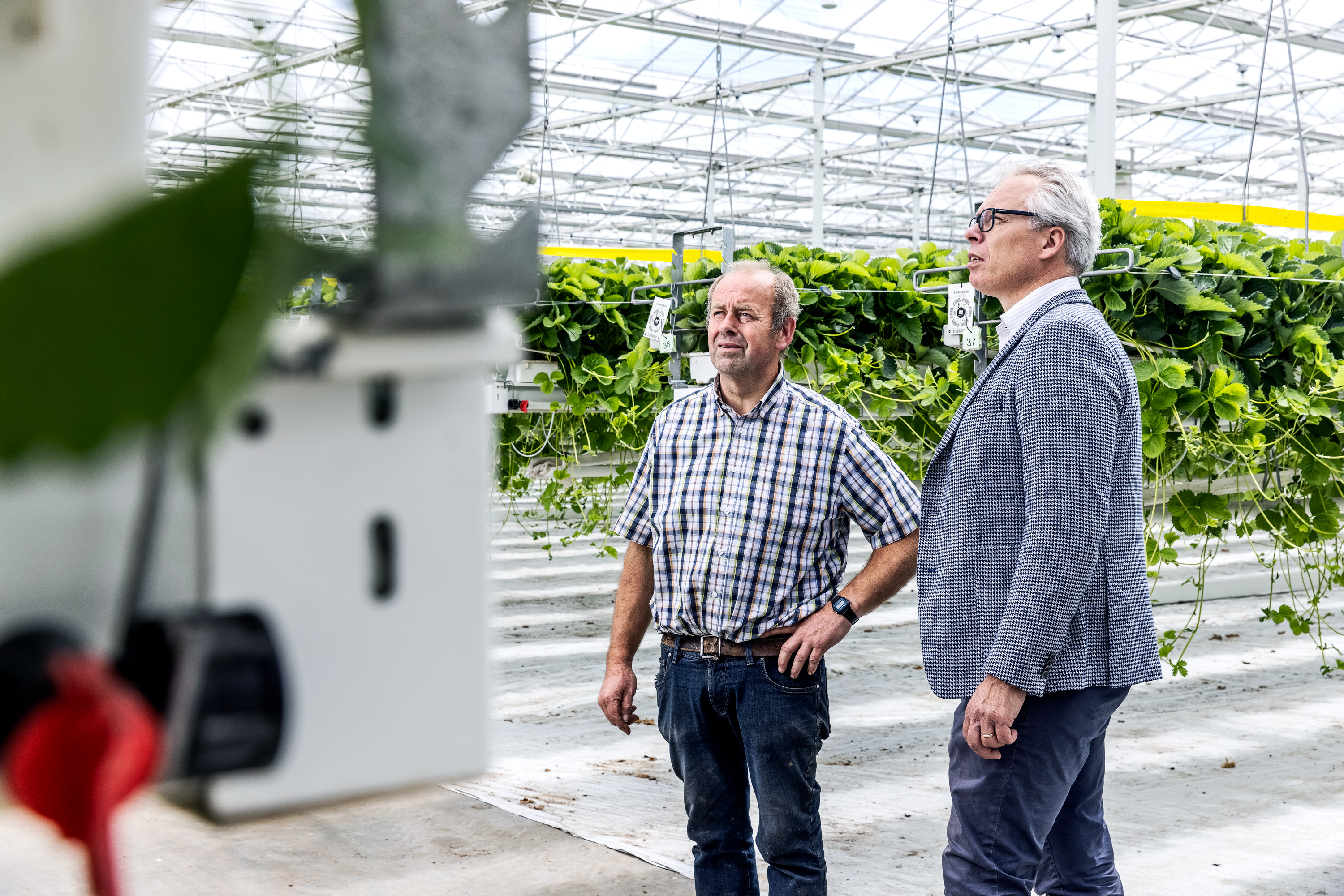Switching from heated to unheated cultivation?
Consider the strength of your greenhouse

A greenhouse is built for the first crop grown in it. Most greenhouses are designed for heated cultivation and calculated for limited snow loads. Greenhouses designed for heated cultivation use lighter gutters and roof bars which cannot support a heavy snow load.
A greenhouse is in general built for the first crop grown in it. Most greenhouses are designed for heated cultivation and as a result reduced snow loads. Our risk specialist Henny Biemans notes that growers in the Netherlands and Belgium are increasingly switching from heated to unheated cultivation or choose to leave their greenhouse empty during wintertime. . The high price of gas is one of the reasons for the switch. “Dutch and Belgian entrepreneurs making the switch are not always aware of the fact that snow must be melt off immediately. In case they don't, damage or loss due to snow load is not insured. Afterall, this can impact your business continuity heavily.” From bell peppers to strawberries or from roses to hydrangeas—Hagelunie does the rounds Consider the strength of your greenhouse when changing crops If you are switching from heated to unheated cultivation, we are here to help · Keep the original heating system in place and ensure adequate boiler capacity to melt snow off the roof. · Keep your gas contract sufficient to heat the greenhouse to at least 12 degrees below the roof in the winter. This gives you the option to heat the greenhouse when necessary. · Before purchasing a greenhouse or switching crops, seek information about the options from your greenhouse builder, manufacturer, fitter, or a Hagelunie technical specialist. They can determine whether your greenhouse is strong enough for your new crop and whether you can melt off enough snow. We recommend future-proofing your investment by buying a sturdier greenhouse We are happy to help
When switching crops, entrepreneurs expeditiously prepare their greenhouse for the new product. It is not that simple, though. Henny talks about his experience with entrepreneurs who switched from roses or bell peppers to hydrangeas or strawberries. The new crop requires much less heating. One business owner had their gas connection throttled, while another had it disconnected entirely. The entrepreneurs did not think of the necessity of melting of the snow in winter time. Afterall, a former heated greenhouse is not strong enough to bear a fair amount of snow.
“A greenhouse originally built for heated cultivation is calculated for a snow load of at least 25 kg per m2,” says Henny. “The calculations are based on the temperature just below the greenhouse roof remaining above 12 degrees, as the greenhouse is heated in the winter. That determines the load-bearing capacity. A greenhouse built for unheated cultivation is usually calculated for a snow load of 42.3 kg per m2. These greenhouses have a stronger construction. Ask your greenhouse builder to calculate the load-bearing capacity of the frame and glass to make sure you know how much snow the greenhouse roof can support.
When switching from heated to unheated cultivation, virtually no greenhouse can survive heavy snowfall without heating.
Entrepreneurs are switching crops more frequently during the lifespan of their greenhouse and using greenhouses longer than they are designed for. Hagelunie recommends future-proofing your investment by buying a sturdier greenhouse. A greenhouse suitable for both heated and unheated cultivation is the best solution. The difference in investment is only 1 to 2% of the purchase price. A stronger greenhouse will avoid many problems in the future, and your investment is easily recouped because you do not need to heat the greenhouse as a precaution if it snows.
If you have any questions, contact your insurance agent.